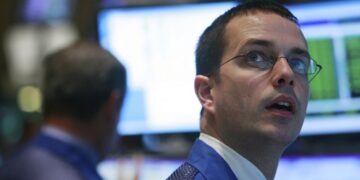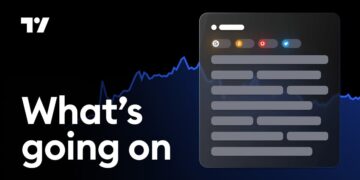“Things are rarely as bad — or as good — as most people think.”
This is not just a personal philosophy. It’s an investment filter — a reminder to resist extremes, step back, and see both the risks and the opportunities when everyone else is gripped by fear or greed. In 2025, this mindset is essential as the world finds itself in the throes of one of the most aggressive trade and policy shifts since the end of World War II.
The United States has moved from global trade leader to protectionist enforcer, unleashing a series of tariffs that have rattled supply chains, international alliances, and investor psychology. But while the headlines scream breakdown, I believe we’re entering a transitional moment — one filled with uncertainty, yes, but also opportunity for those who can keep perspective.
Choas or order? Seek a balance.
1. Global Trade Rewritten: What Just Happened
The sudden re-escalation of trade tensions has brought a wave of shock:
-
The U.S. has layered tariffs on virtually all imports — including allies — with cumulative duties reaching 104% on Chinese goods.
-
China responded with 34% tariffs and export restrictions on critical materials like rare earths.
-
Even countries with free trade agreements (e.g., Singapore) are now facing non-reciprocal U.S. tariffs despite zero duties on American goods.
These developments are not incremental. They are transformative. The era of open markets — the framework that lifted millions out of poverty and drove record corporate profits over the past 40 years — is being actively dismantled.
2. Dalio’s Warning: The System Is Breaking Down
Ray Dalio has compared this period to the 1930s, when the global order broke down and economic nationalism surged. He sees three layers of disruption:
A. The Monetary System
-
We’re reaching the limits of debt-driven growth.
-
Inflation, rate hikes, and asset bubbles have made it harder to sustain the post-2008 expansion.
B. Internal Political Chaos
-
Rising inequality and partisanship have eroded the social contract inside democracies.
-
Economic stress is becoming political stress, with voters demanding radical change — even if it’s disruptive.
C. Geopolitical Realignment
-
The post-WWII multilateral system (WTO, IMF, UN) is losing credibility.
-
Unilateralism and power politics are replacing consensus-building.
“You win a war, you set the rules. That’s how it worked in 1945. But that system is now crumbling.”
Dalio doesn’t see tariffs as a cause — but as a symptom of something deeper.
3. The Bessett Doctrine: Power Politics in Trade
U.S. Treasury Secretary Scott Bessett doesn’t deny that the approach is harsh. But he frames it as a calculated move:
-
“We export one-fifth to them of what they export to us. That’s a losing hand for them.”
-
He claims over 70 countries have contacted the U.S. to renegotiate since “Liberation Day,” when the new tariff regime began.
This is classic negotiation-through-chaos, a strategy President Trump has used throughout his public career — escalate first, force reaction, then negotiate from strength.
Bessett believes:
-
The imbalance gives the U.S. leverage
-
The chaos is temporary
-
The result will be better trade terms, even if the process is messy
But leverage cuts both ways, as we’ll see next.
4. Krugman’s Reality Check: The Math Doesn’t Lie
Paul Krugman delivers a sobering economic counterpoint:
-
Today’s tariffs dwarf Smoot-Hawley, especially since the U.S. economy is 3x more trade-exposed than in 1930.
-
Trade disruptions are not linear — damage grows with the square of the tariff.
-
Krugman expects GDP hits worse than Brexit if tariffs persist.
He also highlights a flawed assumption at the core of the Trump policy: the obsession with bilateral trade balances.
“It’s like saying you run a deficit with your grocery store — they don’t buy anything from you. That doesn’t mean you’re getting ripped off.”
His concern isn’t just economic — it’s about unpredictability:
5. China’s Calculated Resistance
China is not just an economic player — it’s a civilization with deep strategic culture.
Their response isn’t about just soybeans or iPhones — it’s about signaling:
China may believe it can absorb short-term damage more effectively:
-
Its state control over banks, media, and companies gives it resilience tools the U.S. does not have.
-
Its population is historically more tolerant of hardship in the name of national interest.
As one analyst quipped: “They’re willing to survive on rice if it means holding the line.”
6. Media Lens: The Real-World Cost of Tariffs
Journalists have captured the micro impacts:
-
In Oxford, U.K. MINI factories are reeling from Trump’s 25% auto tariffs.
-
In North America, food bank use is rising in towns hit by supply chain shutdowns.
-
In Singapore, officials express disbelief at being punished despite running a U.S.-favorable trade balance.
At home, Americans are warned:
-
“Look at your living room — your TV, your fridge, your phone. This is why this matters.”
-
Tariffs are taxes. The burden eventually hits consumers, not just factories or stocks.
7. My Framework: Order Within the Chaos
Here’s where I stand: Yes, this is messy. But I see a controlled fire, not a forest fire.
President Trump wants a “win” to present to his base — whether or not it’s economically sound.
-
Even if the end result is modest, the perception of forcing other nations to negotiate is a headline victory.
-
He may spin a partial agreement as a total win, and markets will respond positively to relief, not just substance.
And don’t forget: voices like Elon Musk and Peter Thiel, who care about capital markets, still have the President’s ear. He won’t let Wall Street burn forever.
8. What Investors Should Actually Do
This is where it gets actionable.
A. Don’t Chase Headlines
B. Look for Base Building
C. Scale In Carefully
-
Don’t go “all-in.” Use tiered entries.
-
Take partial profits on strong moves — especially if driven by sentiment, not fundamentals.
D. Use Optionality
-
In volatile environments, consider options strategies to define risk.
-
Or use tight stops, if that fits your system.
You’re not trying to catch the exact bottom. You’re trying to catch the confirmation.
There is never 100% certainty — only evidence stacking.
9. Conclusion: It’s Bad — But Maybe Not That Bad
We may be in for a new world order in trade. But the market is already adjusting.
The worst-case scenario is being priced in. And in markets, perception is often worse than reality.
Yes, these tariffs may linger. The global system may take years to find a new equilibrium. And yes, many individuals and sectors will suffer.
But stocks — as forward-discounting machines — are not waiting for perfect peace. They are looking for the peak of panic, and when that moment passes, they move.
And that’s why I come back to my first principle:
Things are rarely as bad — or as good — as most people think.
So stay sharp. Stay cautious. But stay ready.
Join Our Community for Daily Market Ideas
If you’d like to follow our ongoing market analysis — including:
-
Short-term stock trade ideas
-
Buy-the-dip long-term opportunities
-
And controlled-risk investing frameworks based on real-world strategy
Then join our Telegram channel here:
InvestingLive Stocks Telegram Channel
We provide opinions only — never financial advice — and aim to help you approach the market with clarity and discipline in uncertain times. Visit ForexLive.com (to evolve to investingLive.com later this year… Get used to the new name) for additional perspectives.

















